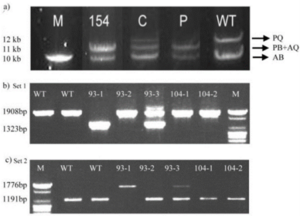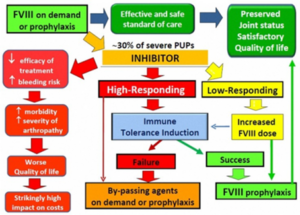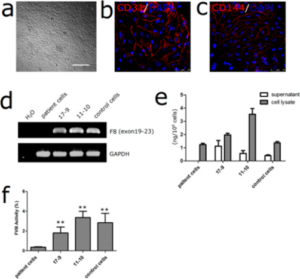Hemophilia in History

A Russian boy born in 1904 suffering from Hemophilia, a genetic blood condition that affects the proper clotting and healing of wounds, unknowingly brought ruin to both his family, the Romanovs, and the nation in which they ruled Russia. The young boy who suffered from this rare blood condition was Alexei Romanov, son of Nicholas and Alexandra Romanov and heir to the Russian empire. Initially, Hemophilia did not run within the Romanov family. The first and only case was that of Alexei Romanov as his mother, Alexandra Romanov, from the German royal family, brought the blood condition into the family through her genetics. Alexandra and Nicholas had four daughters before the birth of Alexei leading to the false sense of security and safety from the genetic blood condition. Out of these four daughters, it is believed that only one of them was a carrier of the blood condition, Anastasia.1
Originally, the blood condition was known as the Coburg Curse and first manifested around the time of Alexei’s birth as he started to bleed at his navel from the cut at his umbilical cord. Alexandra Romanov dreaded this moment as the males on her side of the family typically suffer from this blood condition. She thought she could be a carrier of the trait as well. As soon as Alexei realized he had the blood condition, Hemophilia, his security and safety drastically increased as the slightest injury or harm to his body could have lethal results. Not only did the security for the physical safety of the boy increase, but his blood condition became a state secret as the males of the royal family and, more importantly, the heir to the Russian empire’s throne, could not be seen with such sickness and weakness.
At the time, little was known about the blood condition and even less about how to treat it. A common mistake that the Romanov family made early on was prescribing aspirin to Alexei to help with the pain of the blood condition. Sadly, this medication also thins the blood and makes it more difficult for wounds to heal. This medication paired with his blood condition further damaged the boy’s body and its ability to heal. Due to the secrecy and security of the boy and his blood condition, Alexandra Romanov was desperate for help and turned to a self-proclaimed holy man by the name of Rasputin. He was one of the few people who had any progress with helping Alexei and his Hemophilia. He was the one who originally advised the family to stop giving aspirin to the boy, leading to the betterment of the boy’s health and increased trust with the Russian royal family. Although Alexandra Romanov was already disliked by the public and the people of Russia, her connection and closeness with Rasputin further diminished the name of the royal family, as it was believed that Rasputin was influencing the Russian royal family and their political decisions. It is important to mention that Rasputin was also greatly disliked by the people of Russia. All this hatred and distrust of the Russian royal family as well as the tense and unstable political atmosphere at the time led to the ultimate fall of the monarch and the murder of the entire family by the Bolsheviks. The course of Russian history and the lives of the Russian royal family could have been very different if the knowledge we have today about Hemophilia and its treatment were available to the family back then.
Causes and Genetics

Hemophilia is a genetic condition that affects the body’s ability to coagulate and clot wounds properly, leading to prolonged bleeding and making even the slightest injuries a life-threatening situation, as well as sudden bleeding in several different areas and tissues of the body. This condition has many forms, but the two most prominent types are Hemophilia A and Hemophilia B, better known as Christmas disease. Hemophilia A is caused by a mutation in the F8 gene on the X chromosome leading to the improper development and function of the clotting factor VIII.2 Typically, this mutation manifests as a inversion, when a segment of DNA detaches and reattaches in the reverse order, of a large segment within the F8 gene leading to the defectiveness of the proteins produced by that gene (Figure 2).Due to the fact that Hemophilia is also an X-linked recessive condition, Hemophilia A is more prominent in males than females because females have another X chromosome to offset the damage of the mutation in the first one, but males only have another Y chromosome so there is nothing to offset or help the damage done by mutation.3 This is most likely why the Romanov family did not have a case of Hemophilia until their first son. This does not mean that females carrying an X chromosome with the F8 gene mutation that leads to Hemophilia are not affected by this gene variant. A process called X-inactivation deactivates one of the X chromosomes found in the female cells at random so that, just like the male cells, there is only one active X chromosome at a time. Due to the randomness of this process, sometimes the normal X chromosome is active and sometimes the X chromosome with the F8 gene mutation is active, leading to a partial expression of the mutation in the overall body structure. This usually manifests in lower levels of working clotting factor VIII leading to abnormal bleeding and impaired clotting ability, but not as severe as in males with the full expression of the F8 gene mutation and no normal X chromosome to offset it.
The protein product that Hemophilia affects via the mutation of the F8 gene is clotting factor VIII, a protein that is part of a larger family of similar proteins that play an essential role in the formation of a blood clot.4 The importance of a blood clot is to seal the body off from further infection and damage as well as prevent the loss of essential bodily components such as blood and the nutrients it holds. This specific protein, clotting factor VIII, is mostly produced by the cells of the liver and circulates throughout the body inactive and bound to another molecule called von Willebrand factor. The protein remains inactive in the bloodstream until damage is detected by the presence of thrombin and a blood clot is needed to seal it. When this happens, the clotting factor unbinds itself from the von Willebrand factor via thrombin and binds with another clotting factor, clotting factor IX, leading to a chain of chemical reactions that results in a successful blood clot and sealing of the wound. Due to the mutation on the F8 gene of the X chromosome, when the cells of the body and mostly the liver try to produce clotting factor VIII, they have improper instructions on how to do so leading to clotting factor VIII proteins that cannot perform properly and or cannot perform at all. Due to the lack of functional clotting factor VIII, the binding of clotting factor VIII and clotting factor IX will not occur as often as it needs to happen and the chain of chemical reactions that take place to form a blood clot does not happen as frequently as is necessary to close a wound and fix the damage done to the body. This leads to prolonged bleeding from the slightest injuries and wounds and sudden and almost spontaneous internal bleeding of the bodies of those who suffer from Hemophilia A.
Symptoms, Diagnosis, and Treatment

Some of the signs and symptoms of Hemophilia A can be as small and simple as frequent and difficult nose bleeds, bleeding of the gums and mouth, especially after losing a tooth, frequent bruising, and hematomas from slight injuries to more severe signs and symptoms such as bleeding into the joint cavities like the knees, elbows, and ankles, leading to tightness, swelling, and pain, blood found in urine and/or stools, and even in severe case, bleeding in the brain. This just shows how Hemophilia A can impact the daily lives of the individuals it affects, from small inconveniences to life-threatening situations in a few moments such as the life of Alexei Romanov. Due to the lack of functional clotting factor VIII caused by the F8 gene mutation found in people with Hemophilia A, their body’s ability to perform proper coagulation is impaired and can lead to sudden internal bleeding in several areas, cavities, and tissues of the body as well as the impaired ability to form blood clots at areas of the body that have suffered trauma and wounds.
The diagnosis of Hemophilia typically happens early on as with the genetic nature of Hemophilia A, families who are known to be carriers or have it in their family medical history tend to get genetic testing for clotting factor VIII either before getting pregnant, during pregnancy, or when they are just born. If not detected early, a physician can still check for signs and symptoms and perform a blood clot test to see if the blood is clotting properly or not. This early detection allows for the immediate diagnosis and treatment of Hemophilia for the patient and the prevention of any severe symptoms from developing and life-threatening situations.
The treatment for this condition typically involves the replacement of the missing or impaired clotting factor, in this case, clotting factor VIII.5 This can be done by receiving a blood transfusion from another person who has the proper blood clotting factor, specifically clotting factor VIII. This can also be done by recombinant clot factors which are the blood clotting factor that was made in labs. Depending on the severity of the condition, these types of transfusions and injections can occur only when the individual is having a bleeding episode when it is a milder case, or the individual can have a regularly scheduled transfusion or injection in more severe cases. Other types of medication available to help treat and maintain a good quality of life for individuals with Hemophilia A are medications that allow clotting factor VIII to be released from body tissues that store it as well as help maintain the integrity of the blood clots that are able to form. Some medications even replace the function and role of clotting factor VIII altogether. In terms of the more severe signs and symptoms such as the bleeding in the joints, those will most likely require some form of physical therapy to treat and overcome the stiffness, swelling, and pain. Although the medical community’s knowledge and understanding of Hemophilia A has grown and deepened such as our understanding of its genetic cause, how it manifests in the body, how to detect it within individuals, as well as even how to treat the signs and symptoms of Hemophilia, there is still not a permanent cure and fix for this condition.

The Future of Hemophilia

Despite the vast knowledge and understanding of Hemophilia A, there has yet to be a permanent cure found for the genetic blood condition as the complexity of treating a genetic condition differs from person to person. In some cases, partially functional clotting factor VIII proteins are formed from the F8 gene mutation while in other cases, clotting factor VIII proteins may be missing altogether from the bloodstream and body. This all just depends on the mutation in the F8 gene and how it will affect the production of the clotting factor VIII. There are currently experiments and tests being done to create a possible gene therapy pathway for individuals suffering from Hemophilia A to create a more permanent treatment for the condition by correcting the F8 gene mutation in that individual.6 The main obstacles to this gene therapy pathway are the varying types and variants of mutations that can be found on the F8 gene changing from individual to individual meaning that not a singular gene therapy pathway can cure all the cases of Hemophilia A. They would have to make a uniquely tailored gene therapy for each type of individual that suffers from Hemophilia A making this pathway much less viable as a possible general solution to Hemophilia A. Hopefully, in the near future, the medical community’s knowledge and understanding will further grow and expand in be able to find a more permanent cure for Hemophilia A and further improve the quality of life of those individuals suffering from Hemophilia A like Alexei Romanov from the past.
- An Interview with Dr. Helen Rappaport. (n.d.). National Hemophilia Foundation. Retrieved October 20, 2023, from https://www.hemophilia.org/news/hemophilia-in-the-romanov-family. ↵
- MedlinePlus (Internet). Bethesda (MD): National Library of Medicine (US); (updated 2020 Jun 24). Hemophilia; (updated 2022 May 6; reviewed 2022 May 6; cited 2023 Oct 30) Available from https://medlineplus.gov/hemophilia.html. ↵
- MedlinePlus (Internet). Bethesda (MD): National Library of Medicine (US); (updated 2020 Jun 24). Hemophilia; (updated 2022 May 6; reviewed 2022 May 6; cited 2023 Oct 30) Available from https://medlineplus.gov/hemophilia.html. ↵
- MedlinePlus (Internet). Bethesda (MD): National Library of Medicine (US); (updated 2020 Jun 24). Hemophilia; (updated 2022 May 6; reviewed 2022 May 6; cited 2023 Oct 30) Available from https://medlineplus.gov/hemophilia.html ↵
- Rocino, A., Franchini, M., & Coppola, A. (2017). Treatment and Prevention of Bleeds in Haemophilia Patients with Inhibitors to Factor VIII/IX. Journal of Clinical Medicine, 6(4), 46. https://doi.org/10.3390/jcm6040046. ↵
- Thornburg, C. D., Simmons, D. H., & von Drygalski, A. (2023). Evaluating Gene Therapy as a Potential Paradigm Shift in Treating Severe Hemophilia. BioDrugs : Clinical Immunotherapeutics, Biopharmaceuticals and Gene Therapy, 37(5), 595–606. MEDLINE. https://doi.org/10.1007/s40259-023-00615-4. ↵


